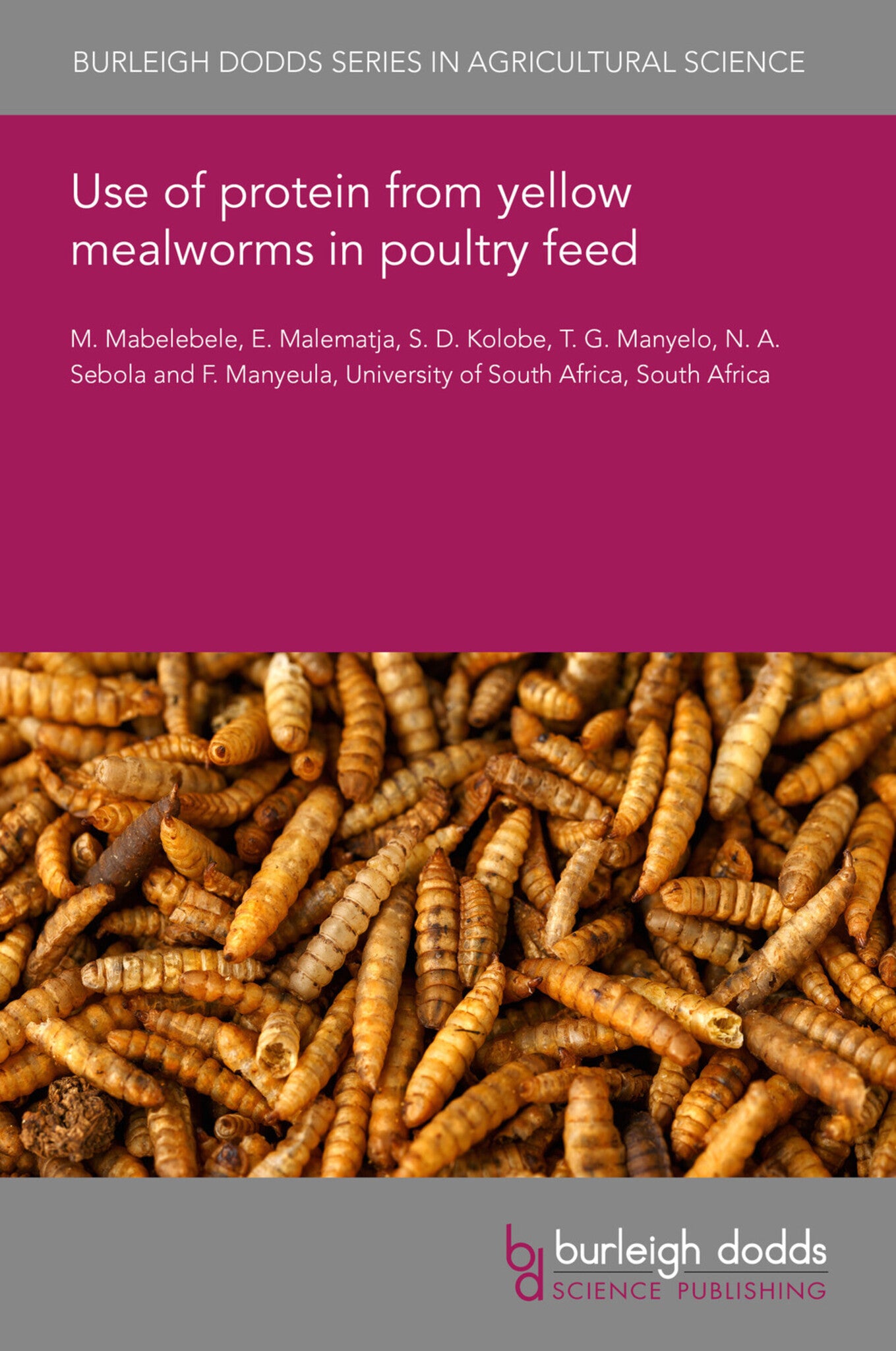We're sorry. An error has occurred
Please cancel or retry.
Use of protein from yellow mealworms in poultry feed

Some error occured while loading the Quick View. Please close the Quick View and try reloading the page.
Couldn't load pickup availability
- Format:
-
11 February 2025

The purpose of this chapter is to appraise the current work done on the use of the yellow mealworm (Tenebrio molitor) as an alternative and sustainable protein source in poultry diets. The incorporation of insects in animal diets is regarded as an interesting topic in animal nutrition. Their popularity is expected to outstrip the current conventional feed ingredients globally. Based on nutritional analysis, yellow mealworm larvae are comparable to conventional poultry protein sources. Hence, they are widely documented as the most appropriate substitute for soybean meal and fishmeal as they have a similar influence on growth performance without having a negative impact on the carcass, meat quality, or egg quality. Therefore, this chapter will discuss the opportunity for using yellow mealworm larvae as a protein source in poultry diets. The nutritional and environmental benefits, processing and storge, and effects of Tenebrio molitor on poultry productivity are discussed.

TECHNOLOGY & ENGINEERING / Food Science / Chemistry & Biotechnology, Food and beverage technology, TECHNOLOGY & ENGINEERING / Food Science / Food Safety & Security, TECHNOLOGY & ENGINEERING / Agriculture / Animal Husbandry, Food security and supply, Food chemistry, Poultry farming

- 1 Introduction
- 2 Electronic database accessibility and acquisition of literature
- 3 The production of conventional protein sources (fishmeal and soybean meal) vs insect larvae
- 4 Inclusion of yellow mealworm in poultry diets
- 5 Conclusion
- 6 Recommendation and future direction
- 7 Conflict of interest
- 8 Ethics approval
- 9 Authors’ contribution
- 10 Acknowledgement
- 11 Where to look for further information
- 12 References



